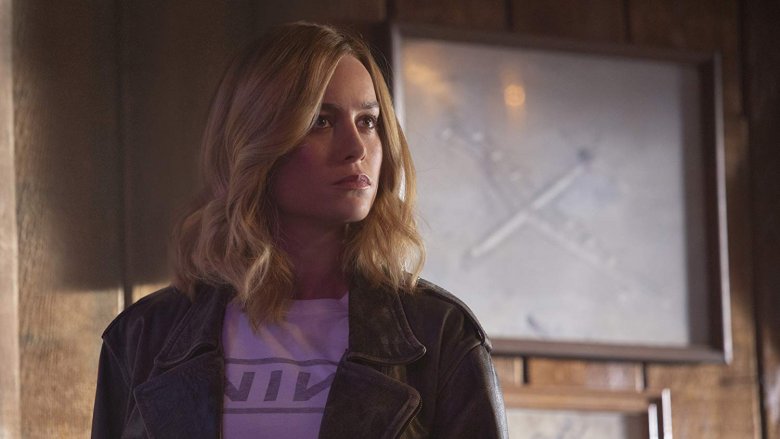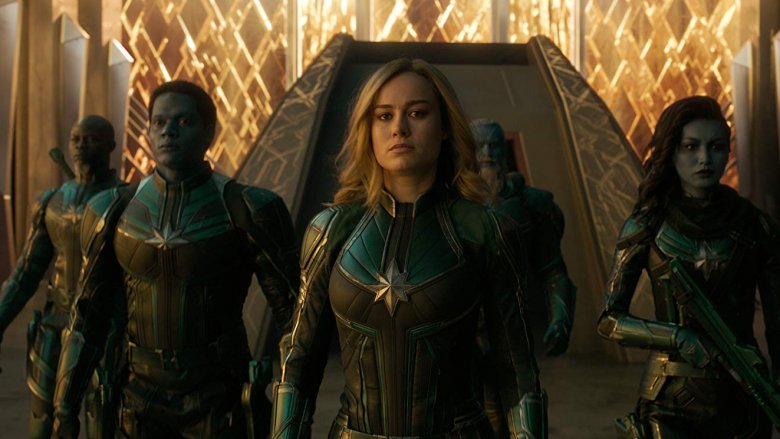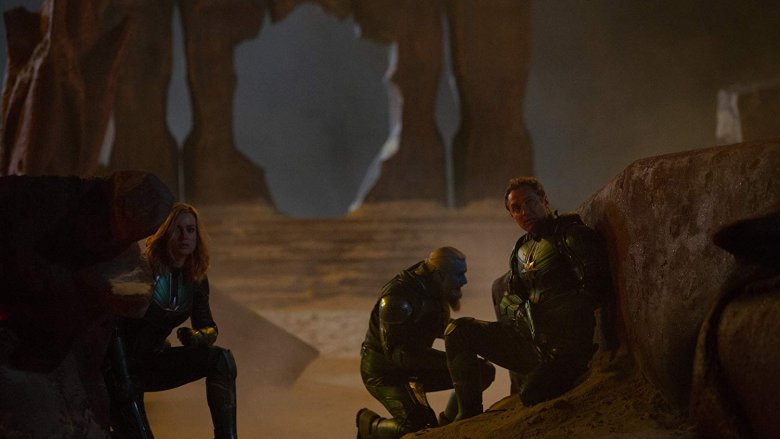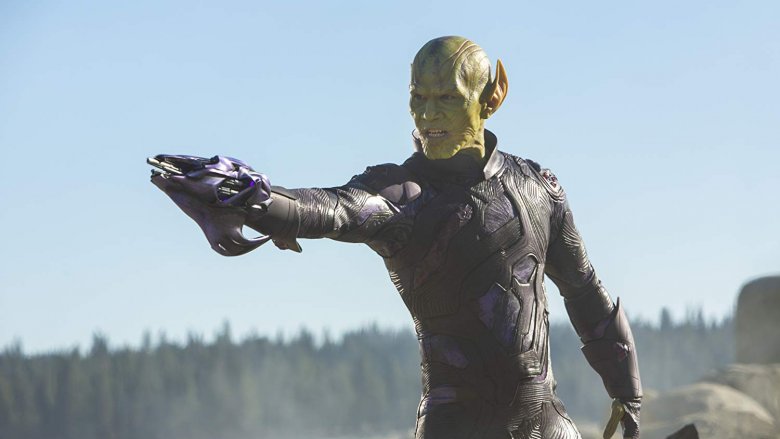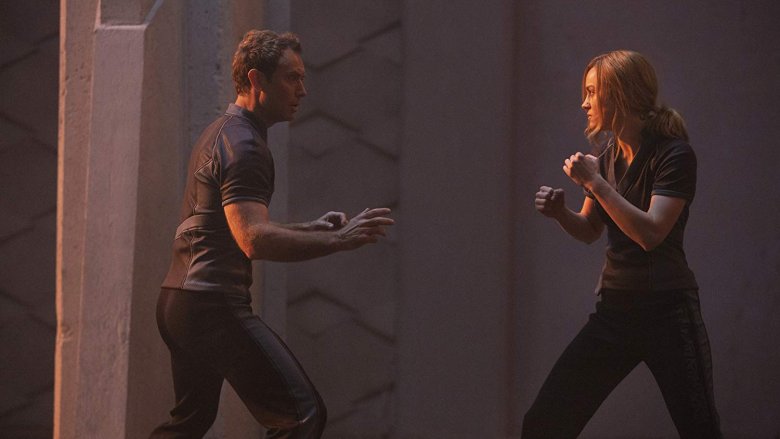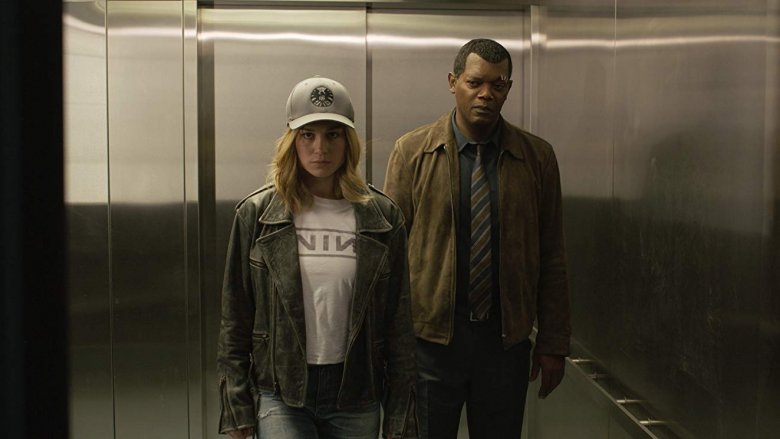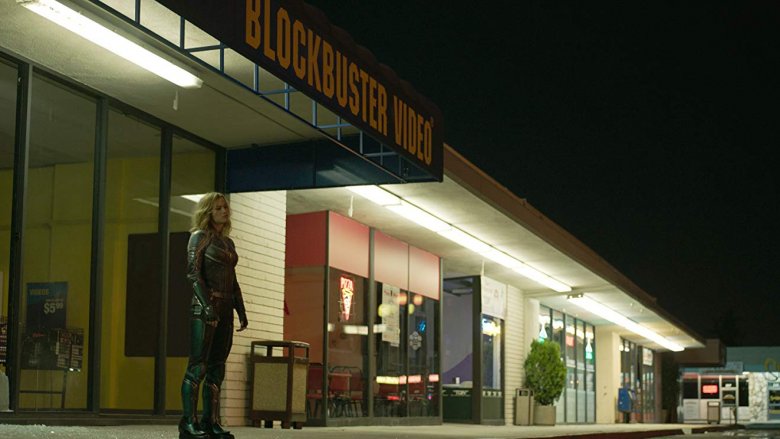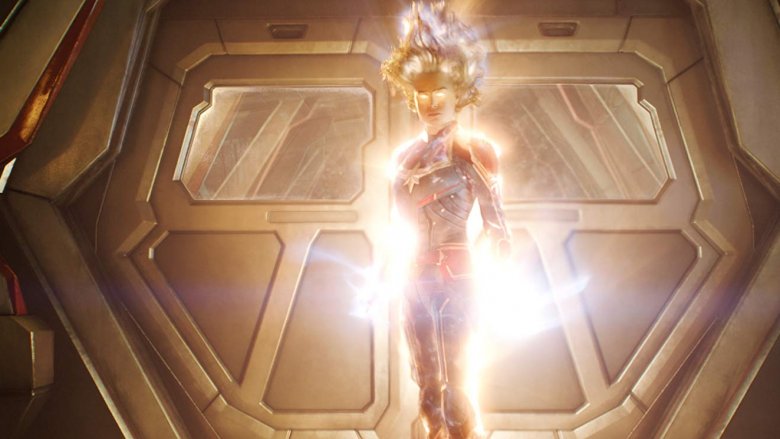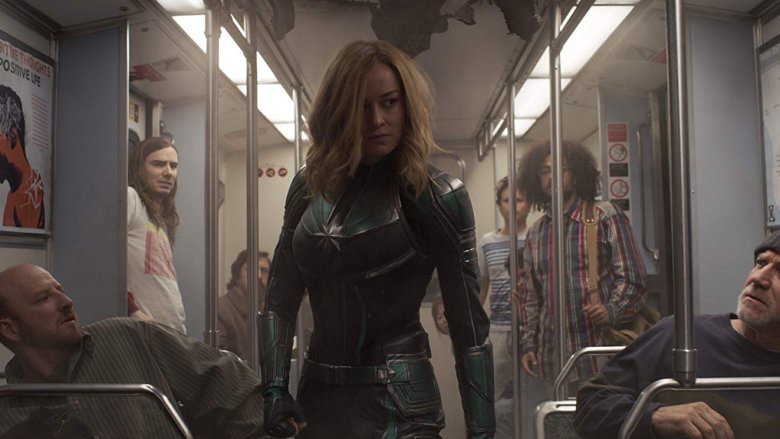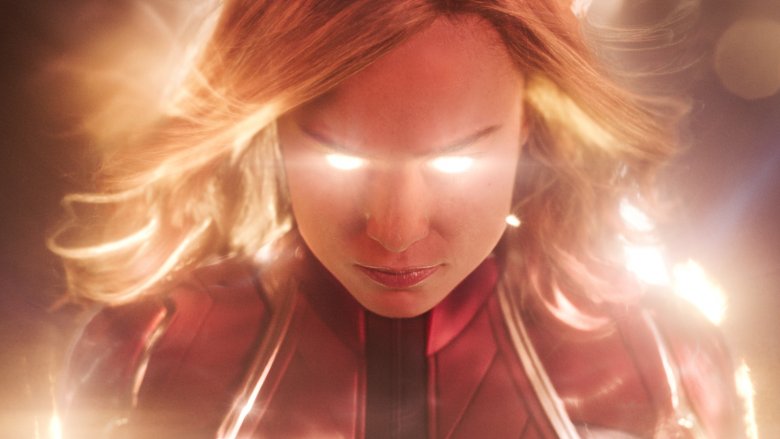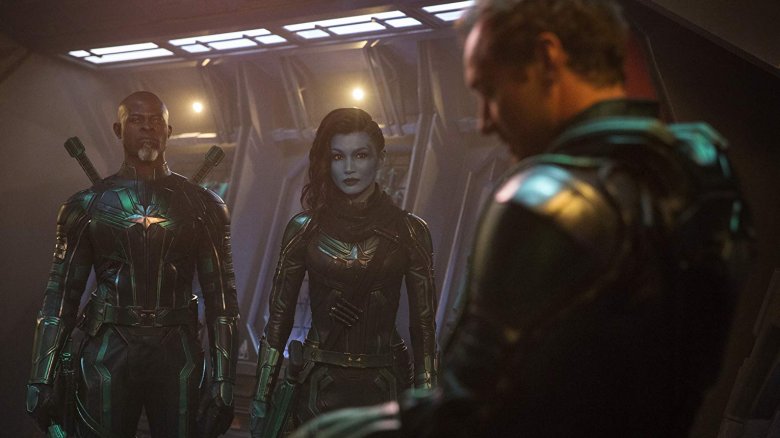Captain Marvel's 5 Best And 5 Worst Things
Captain Marvel is finally upon us. The first showings have come and gone, and comic book movie fans everywhere will be making time to see the film (at least once) and break down every single detail with their friends. That means the Marvel Cinematic Universe fandom is about to pick apart Captain Marvel's good parts as well as its bad.
The film has done reasonably well with critics, and audiences in early screenings also seem to be responding to Brie Larson's first outing as pilot-turned-superhero Carol Danvers, but that doesn't mean the film is without its flaws. Yes, its star is magnetic and carries the film alongside the always charismatic Samuel L. Jackson, but it also occasionally suffers from familiar Marvel Studios problems of look, tone, and formula, and it doesn't always land the way it intends to. So, in an effort to help you examine what works and what doesn't about the latest MCU release, here are our picks for the five best and five worst things about Captain Marvel. Spoilers ahead!
Best: Brie Larson
The film is called Captain Marvel, which obviously means there was very little chance of it working without the right talent in the title role. Brie Larson had to rise to meet that challenge, but her challenge went beyond even that. As Carol Danvers, she had to not only be the first woman to be the sole lead in a Marvel Studios film, but she also had to play a character who's so beloved by comics fans that they have their own name (the Carol Corps) for their fandom, and she had to do it all without the benefit of having been introduced as a supporting character first.
Even with all that on her shoulders, Larson knocked it out of the park. Her Carol Danvers is capable, hilarious, empathetic, strong, vulnerable, and intimidating all at once, an acting challenge made all the more difficult by the script's demand that she not even truly know who she is for much of the film. Larson was already an Oscar-winning star when she was cast in this role, but now she's headed for superstardom because she nailed this part.
Worst: The occasional bland Marvel look
The films of Marvel Studios have taken plenty of flack in the past for the way they look, as more and more fans noticed a certain generic style that seemed to cross between films no matter how many different directors worked for the studio. There's a reason for this, and it has to do with digital photography and certain kinds of color processing, but the end result for many fans is that more than a few Marvel films (with exceptions like Guardians of the Galaxy Vol. 2 and Thor: Ragnarok) wind up looking a little bland.
Sadly, there are elements of Captain Marvel which continue this trend — not so much that it distracts from the film, but enough that some viewers will certainly notice. This is particularly true of the Skrull ambush on Torfa, where everything is dim and murky and the camera seems to move so much that we barely get any time to notice how awesome the Starforce looks as they head into battle. It's not a problem the whole movie has (more on that later), but it's there early on.
Best: The memory probe sequence
Every Marvel Studios film has to exist within the framework of superhero storytelling, which means each film has to find its own way to set itself apart, and bring something new to the grander universe. Captain Marvel does this with its characters and locations, of course, but also with one particularly clever sequence early in the film. After she's captured by the Skrulls, Carol is taken on what's essentially a guided tour of fragments of her memories, as Talos (Ben Mendelsohn) searches for clues that will lead him to the lightspeed engine he's searching for.
As the Skrulls talk amongst themselves offscreen, Carol's memories rewind, fast forward and reshuffle in ways that are both compelling and funny, and the entire sequence serves as a multipurpose storytelling device. It clues us into Carol's past without the boredom of having a character simply explain it, it establishes the key MacGuffin for the film, and it helps entrench the idea of the Skrulls as an invasive force even deeper in the viewer's mind, so that the twist coming later pays off in a bigger way. It's a fun little sequence, and it brings something new and exciting to the MCU.
Worst: A murky timeline
Comic book movies, particularly comic book movies which deal with multiple alien races and planets and a character suffering from memory loss, have to deal with a lot of details, and those details need to remain straight in the minds of the audience to maximize the effectiveness of the story. That means that some details (Wendy Lawson's Pegasus insignia, for example) need to be drilled into the viewer, while others can be mentioned a time or two and then left to slip by. This isn't a problem, except when certain detailed elements are shoved aside so much that they become murky.
With Captain Marvel, this is the case with regard to the film's timeline, in particular the past six years for Carol Danvers. When we meet her she's working with Starforce, but we don't know how long she's been with them or when and how she got there (in part because we can't know all of that yet). Then later we learn she's been on Hala for six years, and she's just... been hanging out that entire time? She hasn't ever gone in search of who she is before? It doesn't matter that much in the grand scheme of things, but it's enough to stick out for certain viewers.
Best: Buddy cop Nick Fury
As great as Brie Larson is in the title role of the film, her role would be diminished if it wasn't given someone to bounce off of, and once she arrives on Earth that role falls to Nick Fury (Samuel L. Jackson) — back when he still had two eyes, a head of hair, and a more jovial approach to the mysteries of the universe.
Having Fury in the film wasn't necessarily going to set it apart from certain other Marvel movies. After all, he showed up in Iron Man 2 with the same mission statement in certain scenes, and he's about to do a similar dance in Spider-Man: Far From Home. By making this younger version of Fury a man a bit less jaded by decades of battling threats and fighting off disaster, we get a different kind of chemistry between Larson and Jackson, and we get to see a side of Fury that none of the other films has shown us. Plus, Jackson just looks like he's having a blast, and that makes all the difference when you're in the audience.
Worst: Blunt early thematic development
In the opening minutes of the film, Carol — known as "Vers" on the Kree homeworld of Hala — wakes up her mentor Yon-Rogg (Jude Law) and the two of them go to train together. As they spar, he begins to repeat something to her that he seems to have repeated numerous times before: She has to control her emotions. She can't get angry, she can't use humor as a defense mechanism, and she can't be emotional in general. Only then will she truly be able to keep her powers in check.
It's an important theme of the film, and while the payoff is ultimately enormous, for much of the runtime it just seems like a lecture put there to make sure the audience knows what the theme is, and not like something Yon-Rogg is saying in a truly organic way. The moments in which the theme culminates work, but the moments that lead us there are sometimes just a bit too on-the-nose, even for something as low on subtlety as a superhero movie.
Best: Carol Danvers stands up
There are numerous memorable sequences in Captain Marvel, from the moment she gets her superpowers to the arrival of the Skrulls on Earth and Carol's crash landing into a Blockbuster video. One sequence will eventually overtake them all, though, and it's likely to be one that many of your friends will be talking about for some time.
As the film reaches its climax, Carol is captured by the Starforce and forced to commune with the Supreme Intelligence, who again hammers home the importance of control in her life and reveals that the Kree have been controlling her gifts this whole time. It's then that Carol summons all the forces of memory, self-confidence, anger, and righteousness she's built up over the whole film. One by one, she remembers every time she's been knocked down in life, only to stand up again. Then, Carol stands up.
Though earlier attempts to drive this theme home felt a little repetitive and stilted, this sequence is an absolute triumph, and the culmination of everything the film wants to say about Carol Danvers and her place in the world. It's cheer-worthy, and it may even bring a tear to your eye.
Worst: Formulaic action (at first)
There's a lot of action in Captain Marvel, and because much of it deals with characters whose skills and powers we haven't gotten to see yet, there's an opportunity to do some really exciting stuff. Sadly, this takes a little while to kick in. The first major set piece — the Skrull ambush on Torfa — happens in such a murky setting that it feels like we only really get to see a portion of it, and as the action heads to Earth, sequences like the train chase feel a little paint-by-numbers.
There is, perhaps, a purpose to be found within this, namely that we are supposed to be watching a version of Carol Danvers who remains inhibited by her Kree training. When she finally does let loose, what happens is spectacular, and that payoff certainly works. There's something to be said for pumping a little more innovation into the action moments that get us there, though, and Captain Marvel falls a bit short in that department.
Best: The final fight
So, yes, we are faced with somewhat underwhelming and even slightly drab action early in the film, but it's all building to something. We see Carol experiment with her powers, see her fight in different ways and in different locations, and it's all building to something. Then she breaks free of her Kree captors, the movie drops the needle on No Doubt's "Just A Girl," and we're off to the races.
The final battle of Captain Marvel has just about everything you could want. It's got a great song choice, great fight choreography, Carol going toe-to-toe with the whole Starforce, the Skrulls helping her out through their disguises, and even Goose getting in on the action. It builds and builds and builds, until Carol is glowing head-to-toe and taking down entire Kree warships single-handedly to the point that she sends Ronan the Accuser (Lee Pace) packing. If the action before this was a little underwhelming, it still might have been worth it just to arrive here. It's spectacular.
Worst: Unclear fight stakes
For all the splendor and glory of that final fight, though, there's something a little off about it that perhaps the film could have established more clearly early on. It's an inconsistency that flares up occasionally throughout, but it stands out in a particular (albeit nitpicky) way in the final sequence, and it's something Marvel has had issues with before.
How are those Starforce members still standing after all the hits they take?
Carol and the Starforce do battle, and Carol wipes the floor with them, shooting photon blasts like she never has before and knocking them all over Mar-Vell's old ship, and yet as the fight goes on we see them keep getting back up and attacking again, even as other Kree soldiers are simply shot once by the Skrulls and brought low. In the same way, we saw Mar-Vell get shot to death in a previous scene, and yet Yon-Rogg is blown 50 feet back into a rock by Carol and still manages to get back up. Are the Starforce just that much stronger than other Kree? Is their armor that strong? Either way, they seem nearly indestructible without the film establishing that in a very clear way.
